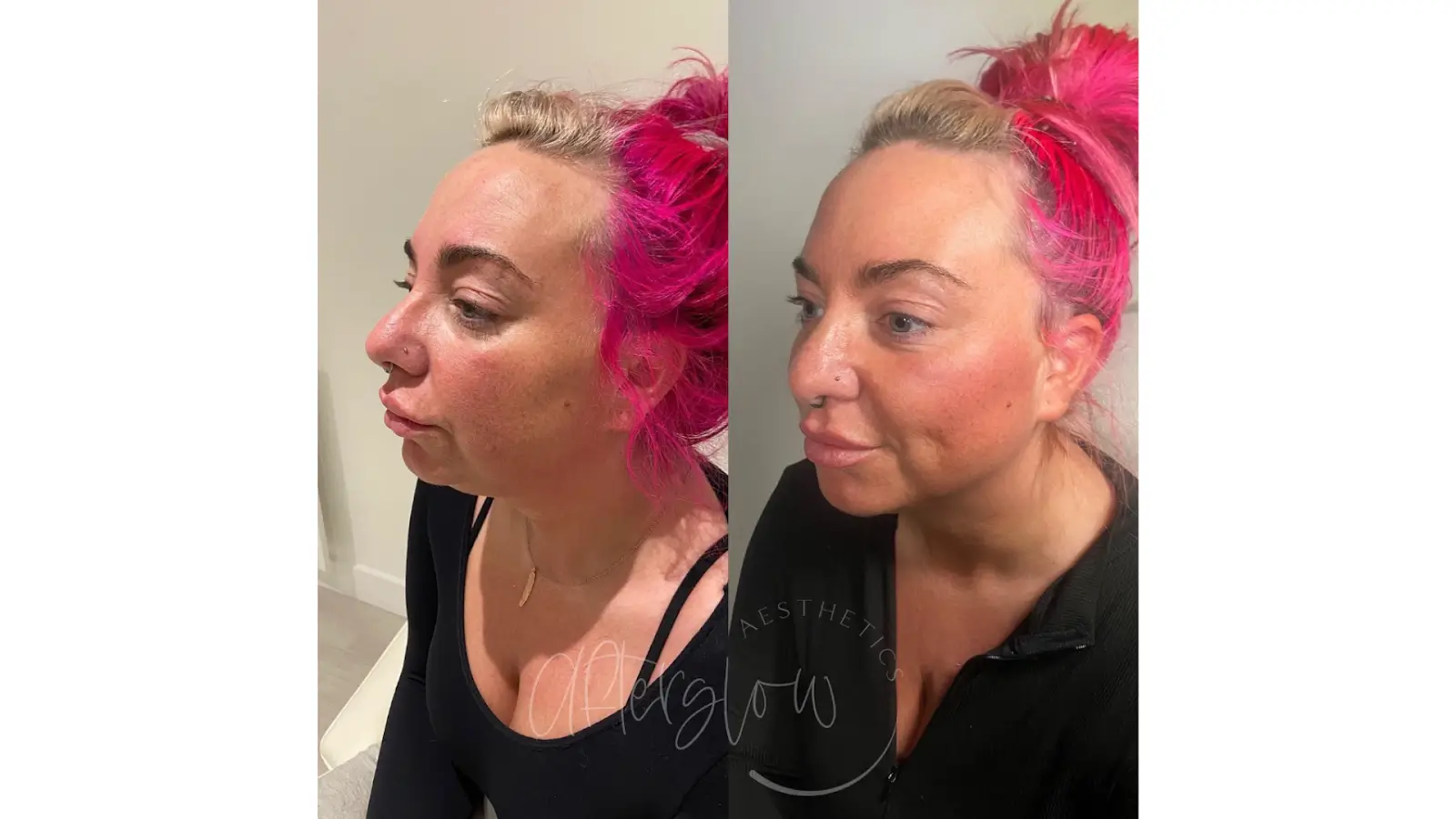
Over 90% of patients treated with hyaluronic acid (HA) dermal fillers reported visible aesthetic improvements and high levels of satisfaction following treatment. This highlights just how impactful well-formulated HA products can be in facial rejuvenation.
Among the many options available, Intraline fillers have gained significant attention. Produced through bacterial fermentation and enhanced with spherification technology, Intraline creates smooth, uniform gel particles that are known for being easy to inject and providing long-lasting results (typically 6–12 months). Patients and practitioners alike appreciate their natural-looking outcomes.
In this article, we’ll dive into real-world feedback from both patients and practitioners. We’ll summarize their satisfaction, highlight any concerns, and help you decide if Intraline fillers truly live up to the promise of effective, reliable facial rejuvenation.
Key Takeaways
- Intraline fillers are praised by clinicians for their injectability and smooth texture, allowing for precise placement and minimal discomfort during procedures.
- Patients appreciate the subtle, natural-looking enhancements provided by Intraline, particularly for areas like the lips, cheeks, and jawline.
- The downtime after Intraline filler treatments is typically low, with most patients experiencing mild redness and swelling that resolves within 24 to 72 hours.
- Intraline fillers adapt well to facial movement, leaving treated areas feeling soft and undetectable, unlike firmer fillers that may feel lumpy.
- Intraline’s numbered fillers (One, Two, Three) cater to various treatment depths, enabling tailored solutions for both fine lines and deep contouring.
- Formulations with lidocaine enhance patient comfort by reducing procedural pain, making Intraline a preferred choice for first-time filler users.
- Clinicians report fewer complications, such as migration or lump formation, contributing to reliable and satisfactory results in aesthetic enhancements.
- Increased satisfaction with Intraline fillers has led to growing referrals and favorable reviews across clinical and aesthetic communities.
About: Doctor Medica is your trusted supplier of top-quality dermal fillers, viscosupplements, and more for your medical practice. We offer genuine products from leading brands at the lowest prices in the market. If you’re looking to order Intraline Dermal Fillers or PDO Threads online for your practice, contact Doctor Medica today.
Practitioner Insights: Ease of Use and Injection Handling

Clinicians consistently highlight the injectability of Intraline dermal fillers as one of their top advantages. The gel’s smooth, spherical texture allows for precise placement and predictable results. This consistency allows it to flow easily through both needles and cannulas, reducing injection force and patient discomfort.
The M Series, formulated with lidocaine, enhances both practitioner control and patient comfort by reducing procedural pain. Aesthetic providers report fewer issues with product migration or lump formation, especially when using advanced techniques like linear threading or fanning. This reliability has positioned Intraline as a preferred brand for shaping midface contours, enhancing definition, and maintaining symmetry, particularly in clients with thin or aging skin.
Patient Experience with Intraline Filler Results and Downtime

Patients frequently describe their Intraline filler results as both natural-looking and confidence-boosting. Areas like the lips, cheeks, and jawline appear subtly enhanced without the exaggerated volume sometimes seen with other brands. What stands out with Intraline is that the gradual softening of the filler over the first two weeks leads to refined contours that don’t scream “cosmetic procedure,” offering a more discreet aesthetic improvement.
As for downtime, Intraline patients generally experience minimal recovery time. Mild redness, swelling, or tenderness at the injection site typically resolves within 24–72 hours without requiring medical attention. This quick recovery time makes Intraline especially popular among busy clients who need to return to work, social events, or light activity quickly.
Another common theme in patient feedback is the natural feel of the product under the skin. Unlike firmer fillers that may feel lumpy or become visible when smiling, Intraline’s smooth consistency adapts beautifully to facial movement. Many users report that even after being touched, the treated areas remain soft and undetectable, further contributing to the discreetness of the treatment.
These qualities have led to an increase in word-of-mouth referrals and positive reviews from Intraline users across clinical settings and aesthetic forums.
Reviewing Intraline One, Two, and Three by Treatment Area
Intraline’s filler range (One, Two, and M Series) is designed to address varying depths and treatment areas, making it easier for practitioners to match the right product with the patient’s needs. Each formulation is tailored based on molecular weight, cross-linking, and viscosity, ensuring effective and safe treatment outcomes across different facial zones.
Intraline One
- Lightweight formula designed for fine lines, superficial wrinkles, and subtle lip enhancement.
- Commonly used around the eyes, mouth, and forehead, where skin is thinner and requires gentle volumization.
- Provides a smooth integration without causing puffiness, making it ideal for refining delicate areas.
Intraline Two
- Mid-viscosity filler used for moderate wrinkle correction, such as nasolabial folds, marionette lines, and light cheek enhancement.
- Strikes a balance between firmness and flexibility, offering visible improvements while maintaining a natural expression.
- Ideal for refreshing facial contours without dramatic changes.
M Series (M2 Plus, M3 Plus, M4 Plus)
- As the densest filler in the M Series, M4 Plus is designed for structural support and deeper injections.
- Commonly applied in areas like the cheeks, jawline, and chin, where significant lift or contouring is needed.
- Provides long-lasting shape enhancement, delivering bold definition and projection for those seeking more dramatic results.
The range of Intraline PDO threads can also be combined with these dermal fillers for enhanced lift and volume restoration, providing a fully customized aesthetic treatment. By selecting the appropriate filler and technique, practitioners can ensure precision, safety, and predictable outcomes.
Pros and Cons of Intraline Fillers Based on Clinical Feedback
When selecting a dermal filler, both aesthetic practitioners and patients weigh the benefits and drawbacks of each option. Intraline has gained attention for its spherified HA technology, affordability, and performance across diverse treatment areas. But how does it compare to other well-known names like Juvederm and Restylane?
| Feature | Intraline | Juvederm | Restylane |
| HA Source & Texture | Bacterial-based HA, spherified for smooth integration | Vycross/natural HA blends, soft consistency | NASHA technology, firmer texture |
| Injection Precision | High precision, good tissue hold | Softer feel, slightly more risk of spread in thin areas | Balanced viscosity, high placement control |
| Best Use Cases | Cheeks, jawline, lips, delicate to moderate wrinkles | Deep folds, lips, mid-face volume | Tear troughs, lips, fine lines |
| Longevity | 6–12 months (up to 18 for structural areas) | 6–18 months depending on variant | 6–12 months |
| Comfort During Injection | M Series includes lidocaine | Most lines include lidocaine | Select variants with or without lidocaine |
| Post-Treatment Effects | Mild swelling, soft finish | Slight swelling or bruising, depending on depth | Some users report firmness or temporary lumpiness |
| Cost Efficiency | More affordable across the board | Premium pricing | Moderately priced |
Although Juvederm and Restylane remain popular in the filler market, Intraline stands out for its smooth texture, affordability, and long-lasting results, especially in areas like the jawline or cheeks. Its combination of versatile use and competitive pricing makes it an attractive option for both patients and clinicians.
Conclusion
Intraline fillers offer a reliable, safe, and affordable solution for non-surgical facial rejuvenation. With a range of options to address everything from fine lines to deep contouring, Intraline offers customized treatments tailored to the needs of each patient. The spherified HA technology, minimal downtime, and patient satisfaction make Intraline a trusted choice for modern aesthetic practices.
FAQs
1. How long do Intraline fillers last?
Results generally persist for 6–12 months, with jawline or structural treatments sometimes lasting up to 18 months.
2. Are there any common side effects?
Common reactions include mild swelling, bruising, redness, or tenderness, which typically resolve within a few days.
3. How do practitioners view Intraline vs other fillers?
Many clinicians prefer it for its spherified gel texture, ease of injection, and predictable integration. It’s considered comparable quality at a more affordable price.
4. Can Intraline be combined with threads for better results?
Yes, some providers pair Intraline dermal fillers with other treatments for combined volume and lift for facial rejuvenation and contouring.
References
Talarico S, Meski AP, Buratini L, et al. High Patient Satisfaction of a Hyaluronic Acid Filler Producing Enduring Full-Facial Volume Restoration: An 18-Month Open Multicenter Study. Dermatol Surg. 2015;41(12):1361-1369. doi:10.1097/DSS.0000000000000549
Bhojani-Lynch T, Deckers A, Ohanes O, Poupard K, Maffert P. A Prospective, Observational Registry Study to Evaluate Effectiveness and Safety of Hyaluronic Acid-Based Dermal Fillers in Routine Practice: Interim Analysis Results with One Year of Subject Follow-Up. Clinical Cosmetic and Investigational Dermatology. 2021;Volume 14:1685-1695. doi:10.2147/ccid.s329415
Torres S, Ruminot C, Nuciforo G, Bonanno C. Enhanced Hyaluronic Acid Fat Grafts, Histological Findings and Specific Markers. J Dermatol Cosmetol. 2017;1(1):00003. doi:10.15406/jdc.2017.01.00003. https://www.cirugia360.cl/wp-content/themes/articulo-grasa.pdf
Related Articles
Joanna Carr
Understanding Side Effects of HYAcorp MLF2: Insights for Safe Practice
Explore the potential side effects of HYAcorp MLF2, a hyaluronic acid-based filler, and gain expert insights on ensuring safe and effective treatments...
Joanna Carr
What Is Viscosupplementation & How Does It Help Osteoarthritis
Interested to learn more about What Is Viscosupplementation & How Does It Help Osteoarthritis? Browse Doctor Medica's comprehensive listing of blog po...
Joanna Carr
Orencia Side Effects – Common and Serious Reactions
Explore the common and serious side effects of Orencia. Learn how to identify and manage reactions to ensure safe and effective treatment for autoimmu...


